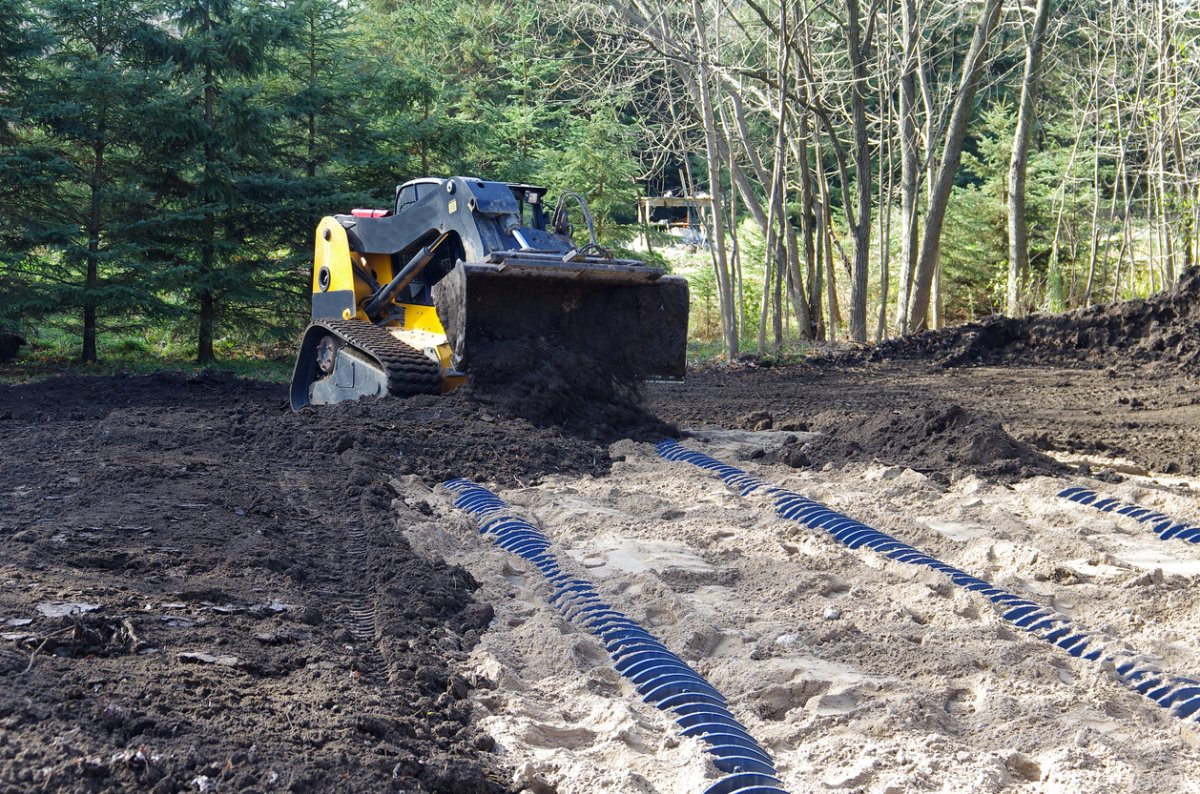

We may earn revenue from the products available on this page and participate in affiliate programs. Learn More ›
Septic systems are designed to break down organic waste from the home, separating the waste into liquids and solids. While the solid sludge that forms in the bottom of the tank needs to be pumped out at scheduled intervals, the wastewater can be treated and reused as irrigation for crops or simply released into a septic field that typically consists of perforated piping, set in gravel trenches, and buried about 1 to 2 feet underground.
This field is often left unused to prevent damage to the system, but there are a variety of things you can (and can’t) put on your septic field. Keep reading to learn how to make use of a septic field without damaging or interfering with the septic system.
You Can Plant Vegetation That Benefits the System
Despite popular belief, it’s actually a good idea to add certain plants to a septic field to aid in the process of evapotranspiration and reduce the harmful effects of erosion, which can leave the field susceptible to damage. Common types of shallow-root vegetation that you can plant to help improve the aesthetic appeal of the septic field while benefiting the septic system include holly shrubs, boxwood shrubs, azalea shrubs, hollyhocks, wild violets, and spring bulbs.
There are even some shallow-root trees, like dogwood and cherry trees, that can be planted within 10 to 20 feet of a septic field, though it’s advised to install a root barrier to protect both the septic system and the trees from each other.
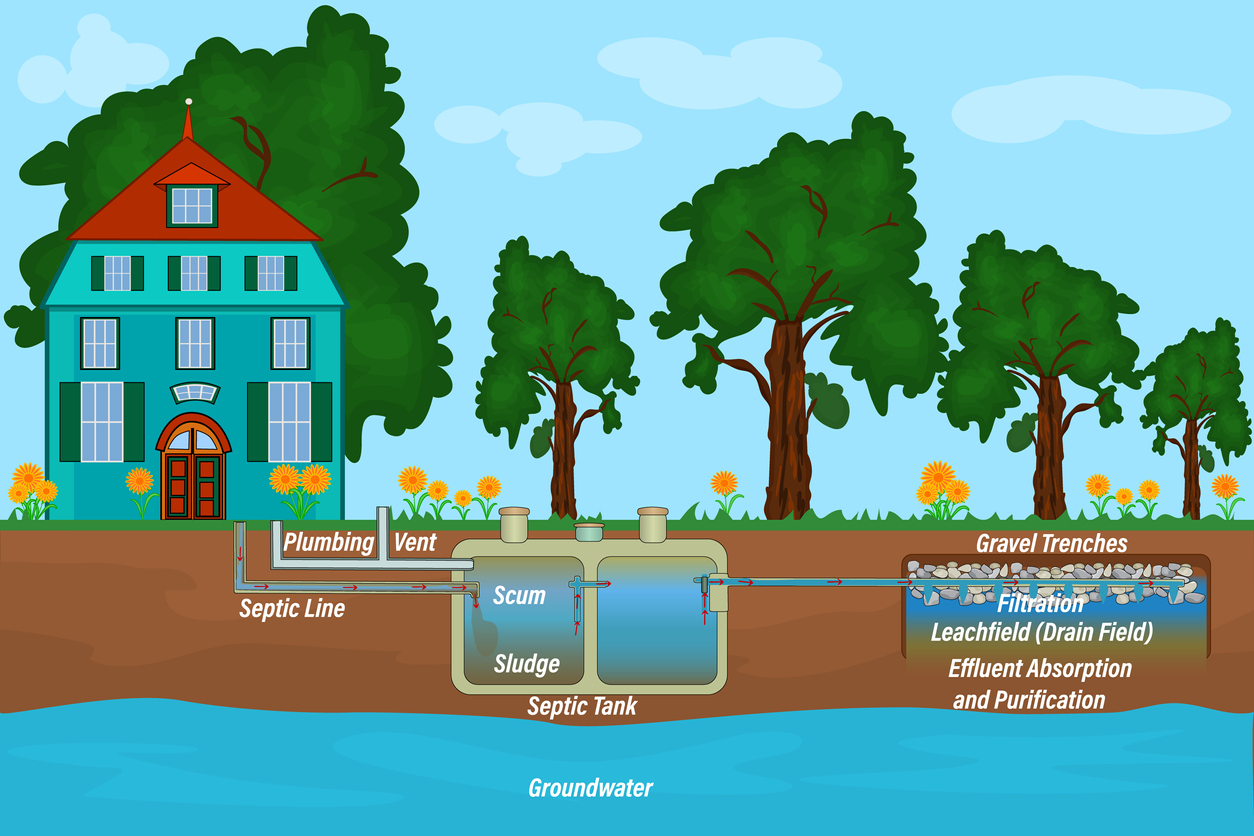
You Can’t Plant Vegetation That Harms the System
While there are benefits to growing certain vegetation on the septic field, you can run into problems if you plant the wrong type of vegetation. Common types of vegetation that you can’t plant on a septic field include pussy willow shrubs, Japanese willow shrubs, aspen trees, birch trees, blue mist spirea, and edible vegetable plants. A vegetable garden might look great, but there is the risk that harmful bacteria, like E. coli, could be absorbed through the roots of the plants, contaminating the food. Even a raised garden isn’t a good idea because the added weight of the soil and bed structures can crush the septic pipes.
Trees, shrubs, flowers, and other plants with deep or expansive root systems can interfere with the functionality of the septic system and may even wrap around the septic field pipes, trapping the septic effluent and causing flooding. In particular, large tree roots are known for their widespread root systems that can break through rock, pavement, and even house foundations, so it shouldn’t be a surprise that these plants are capable of crushing the septic system pipes.
You Can Install an Open-Air Kennel
Most structures put too much weight on top of the septic field to be a viable option, but if you have a dog and want a place where it can play without running off, a simple open-air kennel can be built on top of a septic field. However, it should be noted that this kennel cannot have a roof or any type of floor that would sit over the top of the grass because these additions would interfere with the evapotranspiration process.
Essentially, an appropriate open-air kennel is a fenced area where the dog can freely run. Any additions beyond this straightforward design could pose a risk to the septic field or may prevent access for necessary maintenance. Also, make sure that the fence posts are installed away from the septic field pipes to avoid accidentally breaking a pipe while digging a fence post hole.
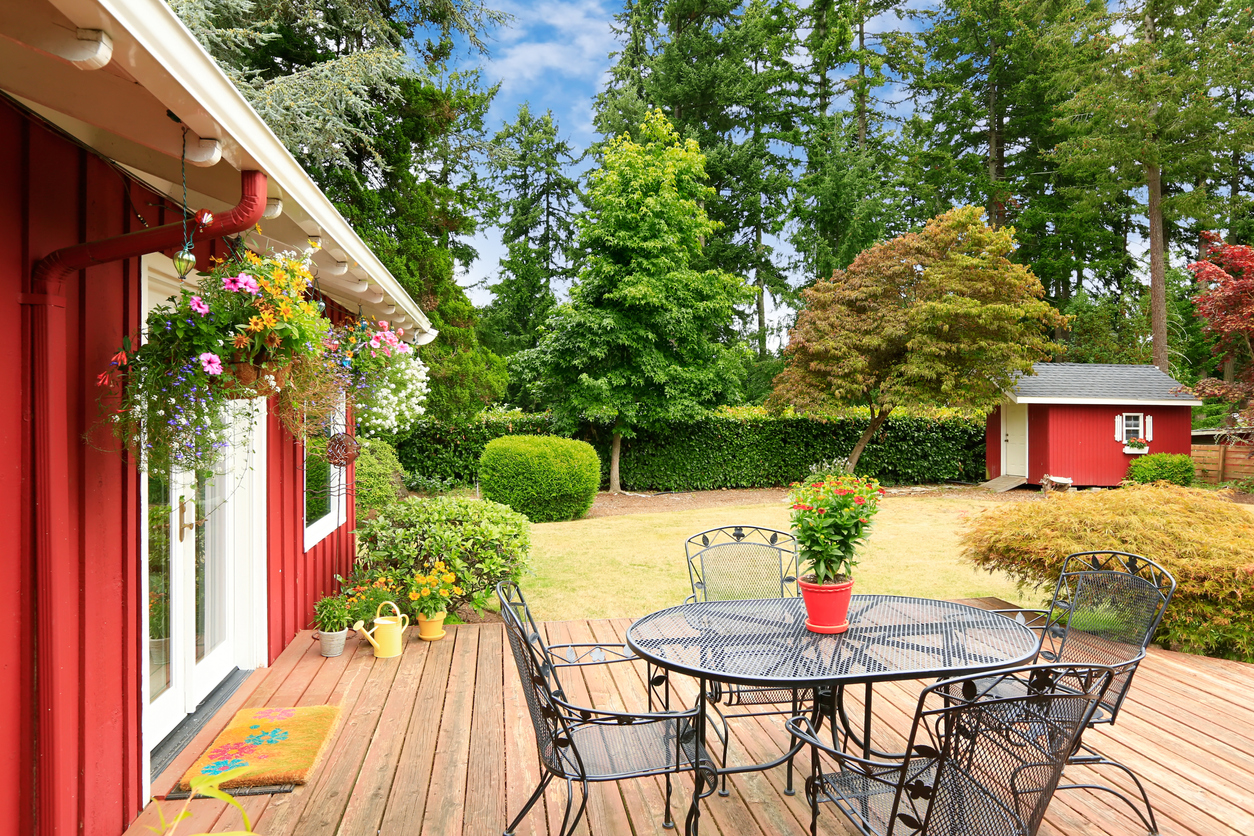
You Can’t Install Structures
As noted above, structures are a bad idea for septic fields and can’t be installed in these locations. Many people try to figure out a way around this, suggesting floating decks, small sheds, and even simple gazebos to help block out the sun, but each of these additions pose a risk to the septic system. Decks are too heavy to be safely installed over a septic field; they also block access to the system while preventing the growth of grass and other beneficial vegetation that reduces the harmful effects of erosion.
Sheds, workshops, and garages have the same issues as decks, with too much weight and too little access. A gazebo isn’t necessarily too heavy for the field, but any type of structure that blocks out the sun promotes erosion in the field, which is the reason even an open-air kennel cannot have a roof. It’s best to avoid building any type of structure over a septic field to prevent future issues.

Tried-and-True Advice
“Before doing any digging or planting, I use a soil probe to test how deep the septic pipes are. It’s a simple tool that has saved me from hitting a pipe while installing fence posts or landscaping.”
—Paul Rankin, Contributing Writer and Editor
You Can Set Up a Lightweight Swing Set
This wide field can seem like a waste of space to some people, but kids and pets can use the area freely without any issues, so it makes a good place to set up a lightweight swing set for the kids. This style of playground equipment is typically intended only for kids under the age of 10 due to the small size and lightweight construction. These factors also make it possible to set up a swing set for some outdoor fun. Just make sure that the swing set doesn’t have any broad roofed areas that will block the sun and damage the beneficial vegetation in the area.
You Can’t Install Semipermanent Playground Equipment
Kids can make great use of the open space provided by the septic field, so it may seem like a great idea to install a permanent or semipermanent play structure, but this can lead to all kinds of problems. Large play structures tend to be too heavy, putting pressure on the septic field and potentially bending or breaking the pipes that are only a foot or two under the ground.
Additionally, this style of play structure typically requires a plastic sheet to help prevent flooding and erosion around the playground, but when this barrier is used over a septic field it blocks the process of evapotranspiration and can actually cause both erosion and flooding in the field. Sand, gravel, and other playground material also inhibits the proper function of the septic field, so even sandboxes can cause damage to the system.
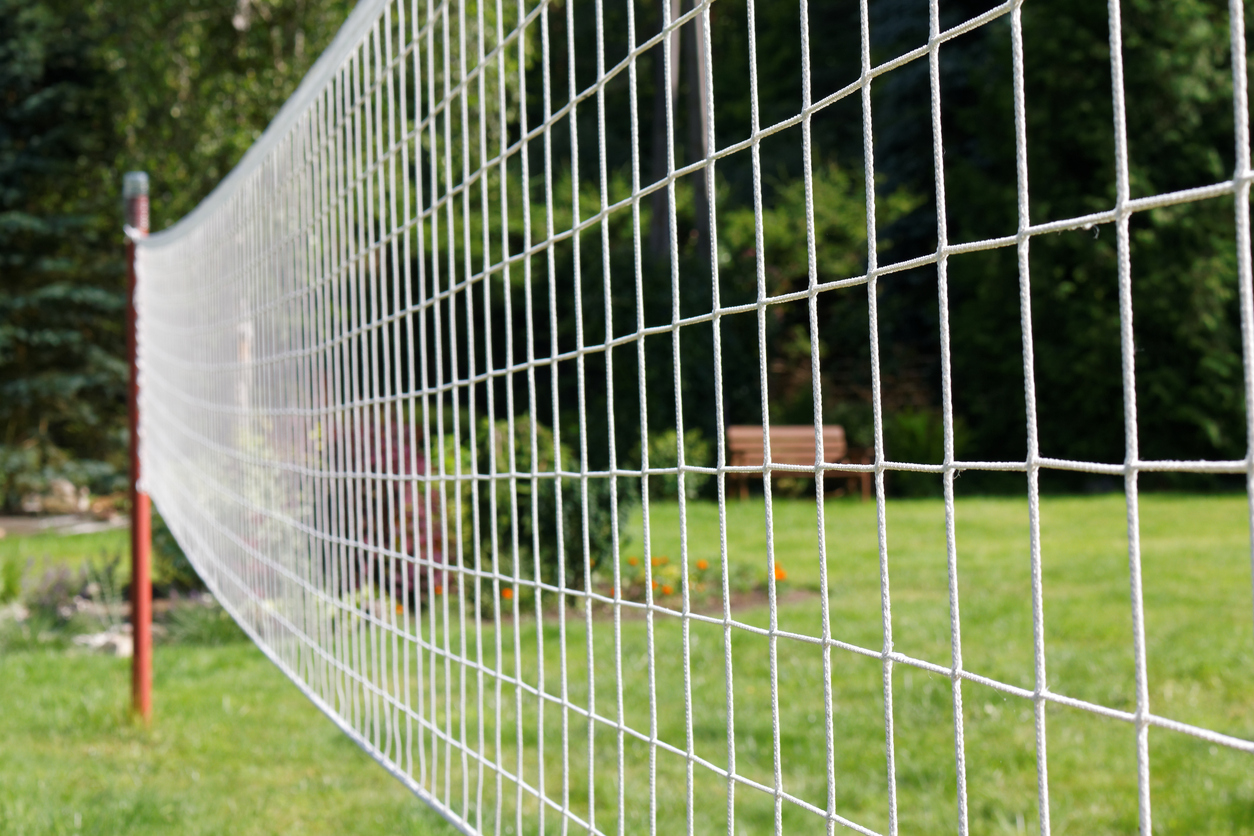
You Can Set Up Volleyball and Badminton Courts
While a regulation court with the appropriate flooring isn’t advised, it is entirely possible to install a pair of posts that can hold a volleyball or badminton net without interfering with the septic system. The grass should be untouched and uncovered, allowing the existing vegetation to aid the septic field with evapotranspiration, but by adding a chalk border or even using rope to place a temporary border around the area, a simple court can be installed without damaging the septic system.
Just keep in mind that such a court should hold no more than four people at a time, so a full-size volleyball court that can accommodate 12 people isn’t a good idea due to the weight that would be placed on the pipes.
You Can’t Install Tennis or Basketball Courts
Tennis and basketball are a bit different from volleyball and badminton in that they typically require a paved surface to be played properly. Paving over the septic field for any reason, including creating a parking space, building a patio, or installing a tennis or basketball court is a bad idea. Not only does the addition of concrete prevent the process of evapotranspiration, but it also adds a significant amount of weight that could cause the septic field pipes to collapse.
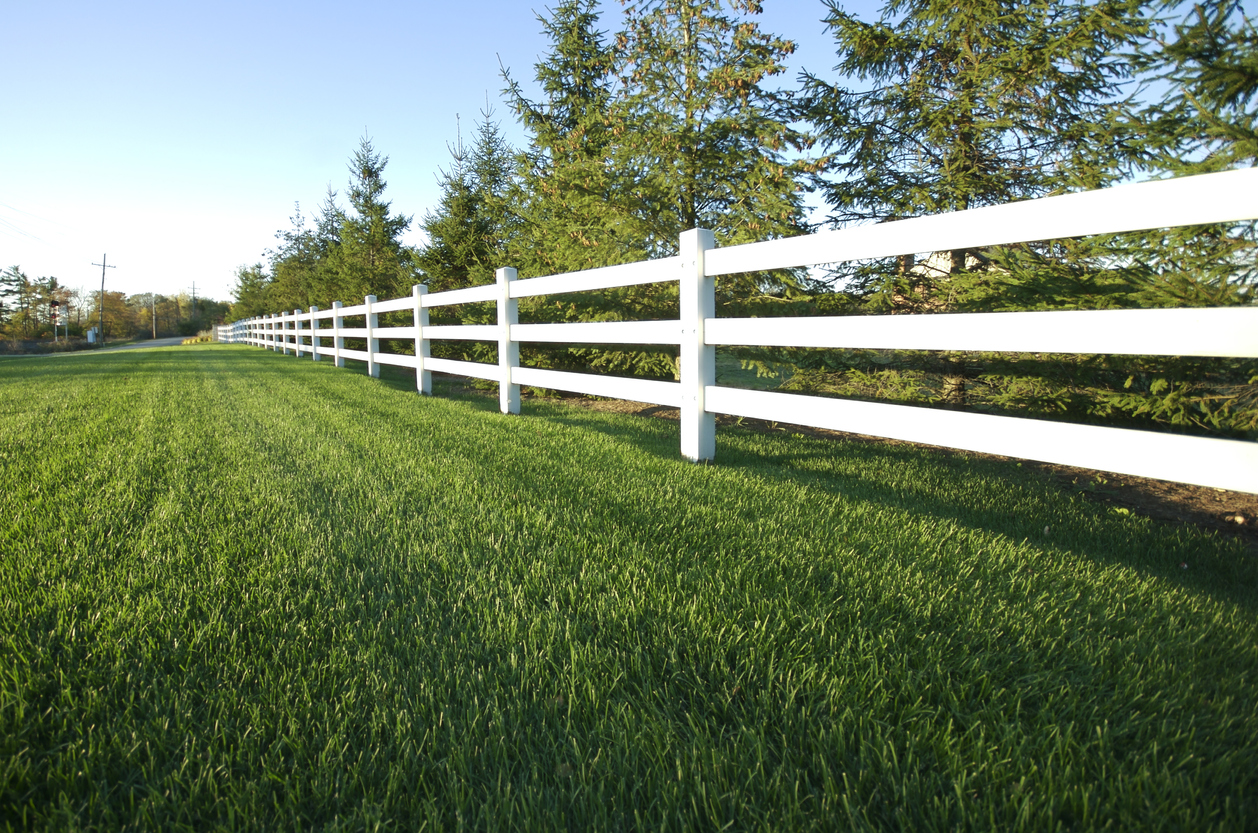
You Can Build a Fence
Putting up a fence in the yard isn’t as easy when there is a septic system to worry about because you need to make sure that the posthole can be dug and the posts can be installed without damaging the septic field pipes. However, with an accurate blueprint that indicates where the pipes are installed, it is possible to put up a fence around the septic field or even running through the septic field.
Just make sure to take the time to properly plan out the exact position of the fence posts and to proceed with caution while you are digging the holes for these supports. With the proper placement, the weight of the fence is fully supported by the posts so that it doesn’t cause undue stress to the septic system. Also, make sure that the system can still be accessed for maintenance when necessary.
You Can’t Add a Pool or Water Features
Pools, ponds, and streams are excellent additions to a property, but they need to be kept well away from septic fields. Ponds and streams that are too close to the septic field risk becoming wastewater runoff points, reducing the effectiveness of the system and creating sites around the home that collect hazardous contaminants, like E. coli.
Inground pools should be an obvious issue, given that they need to be dug out and installed in the ground where the septic pipes are running, but even above-ground pools can cause problems. The pool doesn’t just block oxygen from reaching the septic pipes, halting evapotranspiration, but the weight of the pool, especially when it’s full, will likely crush the pipes and back up the entire septic system.
